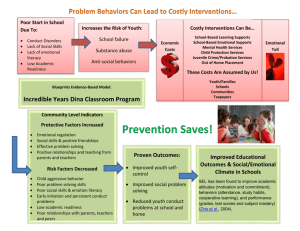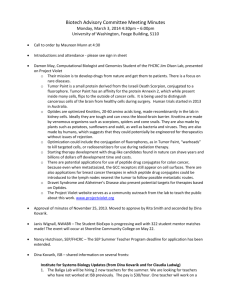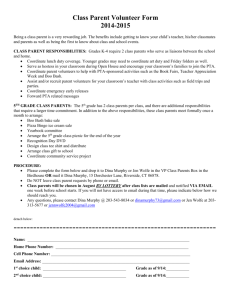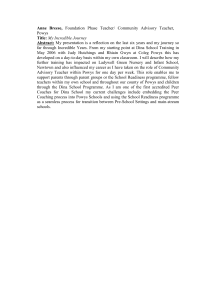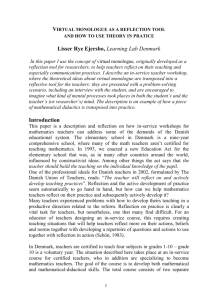Individual food habits
advertisement
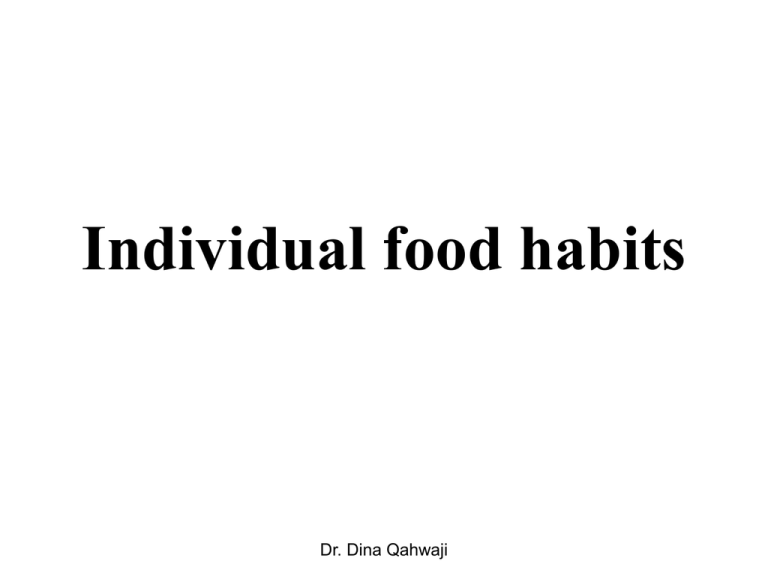
Individual food habits Dr. Dina Qahwaji • Eating choices are typically made by: 1. Availability • Local geographic consideration, such as weather, soil, and water conditions. e.g. a society living in the cool climate of northern Europe is not going to establish rice as a core food, just as a society in the hot wet regions of southern India is not going to rely on oats or rye. Dr. Dina Qahwaji • Political, economic, and social management is directed to assuring reliable and reasonable sources. e.g. advances in food production, storage, and distribution. • Experience the impact diet (fear of disease) can alter accessibility. • Availability issue is not the first issue in case where serious food shortage is the norm. Dr. Dina Qahwaji 2. Edible or Inedible • Inedible food: Toxic or not eaten because of strong belief or holy. Vary culturally. e.g. animals dangerous to catch. • Edible by animal but not by me: Rodents -vary by culture. • Edible by human but not by my kind: Acceptable in some society but not in one own culture. e.g. Snails (Africa), dog meat (Asia). Dr. Dina Qahwaji • Edible by human, but not by me Acceptable by a person’s culture group but not by individual due to factors such as preference, expense, or health reason. • Edible by me Accepted as part of individual dietary domain • There is always exception to the way that food is categorized – not always poisonous food and plant is avoided (fugu, Japan). Dr. Dina Qahwaji Intercultural Communication • Intercultural challenge: • Iceberg analog-describe how a person’s culture heritage can impact communication. Ethnicity, age, nationality and gender –most visible personal characteristics affecting dialogue (tip of the iceberg) Beneath the surface but equally important may be degree of acculturation or adaptation, health condition, religion ….. etc. Dr. Dina Qahwaji Iceberg model of multicultural influencing on communication Race Gender Age Nationality Acculturation Socioeconomic Status Occupation Health Condition Religion Educational Background Dr. Dina Qahwaji • Communication is described as action chain meaning that one phrase or action leads to the next. Successful communication, if communication action chain is understood. • Communication is a whole series of unwritten expectation regarding how a person should respond, and such expectation is largely cultural in origin. Dr. Dina Qahwaji • Meeting a person for first time-only data speaker have to work from their own cultural norm. To predict how that person will respond to their word. What conversational approaches are correct. • Meeting a person for first time-speaker use social roles to determine their communication behaviour. Dr. Dina Qahwaji • Observing personal signs about communication habits that vary from cultural or social norm. • Interpersonal relationship (2 persons)-based on personal communication preference; group interaction- depend on cultural or social norm. Dr. Dina Qahwaji • Intercultural Communication Concept: • Non-verbal actions are idea, emotion and attitude translated (such as signal, position, eye contact) to send a massage. • Only the sender of the massage knows its meaning; receiver must use what it is known about cultural and social norms as well as the sender personality. Dr. Dina Qahwaji • Verbal Communication • The abstract natural of language means it can only be correctly interpreted within context. • Verbal communication happen within these culture premises, often operating at an unconscious level in the speaker. Dr. Dina Qahwaji • The cultural parts of context are usually together that a speaker often beliefs they are natural - that all other people must communicate according to the same beliefs Context include issue common to culture worldwide such as role of individual, power, status …. Etc Dr. Dina Qahwaji • Low and high context culture: • The context in verbal communication varies culturally • Conversational context can be defined as effective and physical signs a speaker uses to indicate meaning such as tone of voice, facial expression, position and signal. Dr. Dina Qahwaji Low Context High Context Precise wording Nonverbal action Logical Context Linear sequence unclear More Objective More personal clear Circuitous & incomplete Straightforward direct Attitude and feeling – more prominent Massage through the words Indirect & implicit Disagreement are personal Reading between the lines e.g. European e.g. Middle Eastern, Asian Dr. Dina Qahwaji • Misunderstanding easily happen if either participants is unfamiliar with the meaning of the nonverbal means being use. e.g. eye contact, sound…. • Low context listener are often impatient with high context speaker • Low context listeners miss the effective and physical expression in the massage. • Health care professional-extremely low context Clients from high context culture-disappointed, by such impersonal, objective interaction. Dr. Dina Qahwaji Five limitations for effective communication 1. Provider can never fully know a client’s thought, attitude and emotion, especially when the clients is from a different cultural background. 2. Provider must depend on verbal and nonverbal signals from the clients to learn what the clients believe about health and illness and these signals may be unclear. Dr. Dina Qahwaji 3. Using your own cultural understanding of communication is not enough for accurate interpreting of meaning in another cultural context. 4. Provider’s state of mind at any given time may bias interpretation of a client’s behaviour. 5. Misunderstanding of meaning is common. Dr. Dina Qahwaji Responsibilities of the health care providers • It is the practitioner’s duty to understand what is said by the client and to provide the client with information needed to participate in treatment • • • • Need to be familiar with cultural norms Listen carefully and seriously to client Take action based on what is said by the client Caring and considered communication can empower the clients within relationship and improve treatment efficacy Dr. Dina Qahwaji Four stages of intercultural communication awareness: • Unconscious incompetence: speaker misunderstands communication behaviour but doesn’t even know misinterpretation has happened. • Conscious incompetence: speaker is a ware of misunderstanding but make no effort to correct them. Dr. Dina Qahwaji • Conscious competence: speaker considers his/her own cultural communication characteristics and makes modification as needed to prevent misinterpretation. • Unconscious competence: speaker is skilled in intercultural communication practice and no longer needs to think about them during conversation. Dr. Dina Qahwaji
